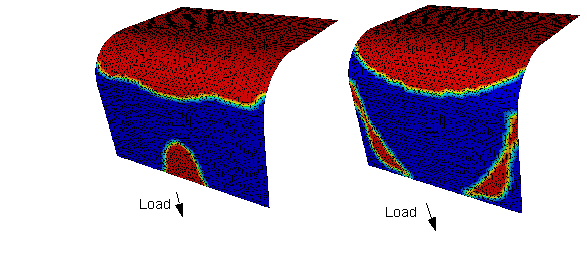Penalty Conditions (BEAD_MIN_STRESS and BEAD_MAX_MEMBRANE) | ||
| ||
Two penalty functions are available in Tosca Structure.bead:
- BEAD_MIN_STRESS = <penalty_value>
- BEAD_MAX_MEMBRANE = <penalty_value>
The functions make sure that the areas that either have very low stresses or a low bending/membrane stress ratio are disregarded by the optimization.
The BEAD_MIN_STRESS penalty value is the relative to the maximum von Mises stress in the design area. If an element has a lower von Mises stress than this value, the element is left out of the optimization.

The BEAD_MAX_MEMBRANE is based on the ratio between
the highest principal of the two tensors, Differential Stress Tensor
and Membrane Stress Tensor, respectively. The Differential Stress Tensor
is a measure for the bending of a plate whereas the Membrane Stress Tensor
is a measure for in-plane stress.

Important:
|